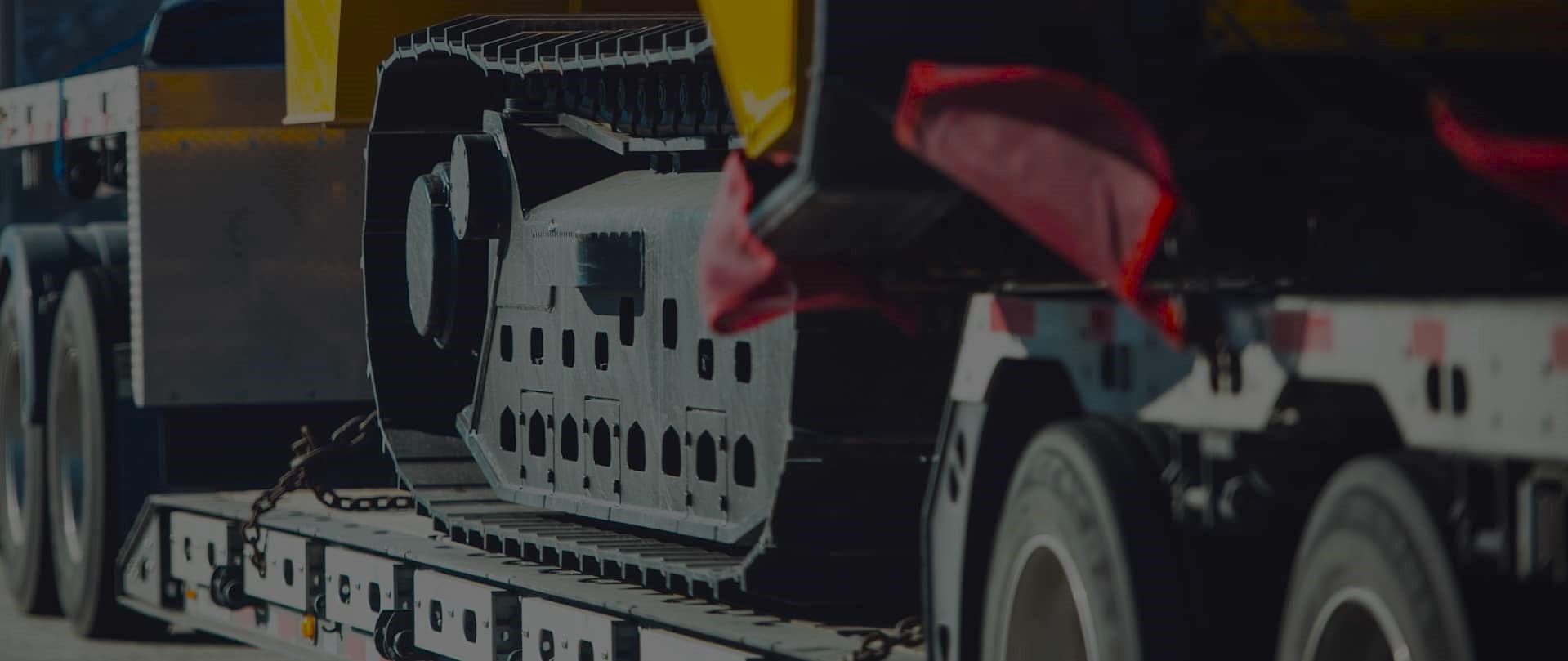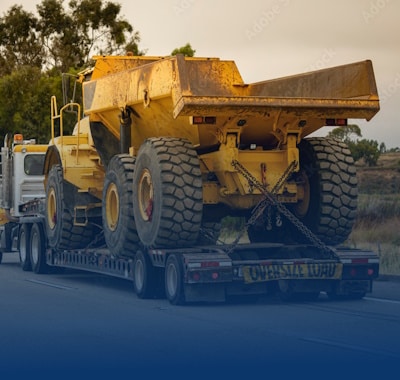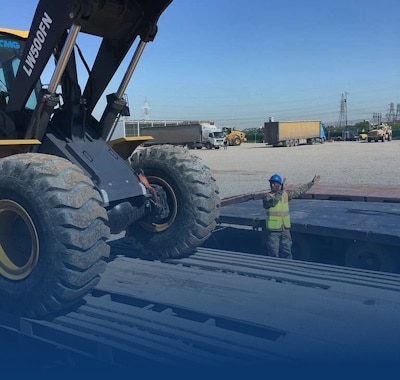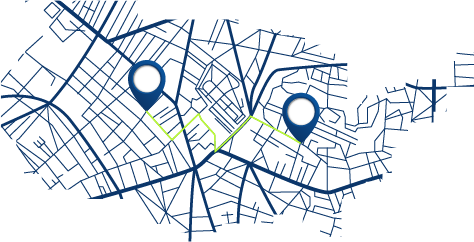Navigating Oversize Obstacles on the Gulf Coast After Hurricanes
Freedom Heavy Haul can offer expedited Pickup and Delivery for any size shipment anywhere in the USA. Contact us today for No Hassle, No Pressure Pricing.
This guide sets clear expectations for how large loads move safely in the gulf coast after a major storm. It outlines first reentry windows, permit priorities, and how operations stabilize over time.
The region’s geography funnels big cargo through a few tight links that tie ports, interstates, and the metropolitan corridors near new orleans. That concentration creates chokepoints that crews must plan for from day one.
Lessons from past events—where surge and levee failures caused vast damage and loss of life—shape routing and timing now. Safety and health of crews, escorts, and residents drive every decision.
This intro previews thresholds for height, width, and weight, and how emergency rules shift enforcement without removing key risk controls. It also flags curfews, escorts, debris, and bridge limits that shape week-one movement versus later rhythms.
Case study at a glance: Scope, period, and why the Gulf Coast is different
This case view focuses on how present-day infrastructure limits and population patterns shape safe, large-scale transport.
Study lens: hazard, exposure, and vulnerability across coastal counties
The scope covers heavy-haul logistics in coastal counties where hazard, exposure, and vulnerability meet. That mix shapes which routes are viable and how fast permits move, affecting residents who need essential supplies and repairs.
Temporal context: present-day realities, months to years on
Analysis is set in the present time, months to years into multi-year cycles when some infrastructure is still impaired and seasonal storms can interrupt plans.
- Data sources: Maps and population shifts from the u.s. census bureau and u.s. census series guide staging, escort needs, and neighborhood windows (accessed july).
- Operational signals: Surge maps, debris footprints, and bridge reports forecast access for people and equipment.
- Coordination: Active liaison with an emergency management agency and county EOCs aligns heavy-haul moves with lifelines like power and hospitals.
| State approach | Effect on moves |
|---|---|
| Louisiana—uniform building codes | Lower structural failure risk; clearer routing rules |
| Mississippi—patchwork rules | Variable permit timelines; localized workarounds |
Core question: How to move at scale while improving outcomes for residents—power, water, and hospital access—rather than counting loads alone.
Setting the stage: Hurricane Katrina’s benchmark impacts on New Orleans and the Mississippi coast
Katrina set a new reference for surge and wind impacts that altered how planners stage heavy equipment and escorts for a metropolitan area. The storm intensified rapidly as a tropical cyclone, reached Category 5 strength over warm water, and made landfall on August 29, 2005.
Storm surge and levee overtopping: Weeks of flooding in a metropolitan area
Surge peaked near 30 feet along the Mississippi shoreline and overtopped New Orleans levees. The city sat flooded for weeks, leaving pumping stations powerless and blocking first-in deliveries for pumps and power.
Losses, safety, and structural damage that redefined recovery
Widespread wind and flood damage shut bridges and weakened roadbeds. That forced long detours and new escort rules years later as agencies mapped safer routes.
“Access constraints after the storm made clear that routing must account for surge, subsidence, and damage—not just distance.”
Outcomes: Over 1,800 fatalities and roughly US$205 billion in losses pushed states to change codes. Louisiana adopted stronger wind rules statewide; Mississippi’s response remained uneven for years.
- Weeks-long site denial delayed home repairs and complicated logistics for people and crews.
- Rapid intensification showed the need for flexible staging outside primary surge zones.
- Since Katrina, route surveys combine hydro and geotechnical checks for safer heavy moves.
| Impact area | Operational effect | Policy response |
|---|---|---|
| Levee breaches & flooding | Weeks of inaccessibility; delayed first-in deliveries | Revised staging guidelines; multi-agency playbooks |
| Bridge and road damage | New detours; stricter escort and clearance checks | Targeted inspections and temporary shoring standards |
| Wind and structural loss | Higher safety controls at work zones; low-clearance risk | Statewide code adoption (Louisiana) and ongoing gaps |
Top Gulf Coast oversize challenges during hurricane recovery
Operational windows narrow quickly after a storm. When routes fail, teams must sequence inspections, shoring, and convoy timing to keep people and assets safe.
Physical access: Damaged roads, bridges, and high-clearance constraints
Storm debris, downed utilities, and structural damage to overpasses create rolling chokepoints in affected areas. Crews run iterative route surveys before each move to verify clearances and load paths.
Workarounds include temporary shoring, dollies, and reconfiguring loads to protect weakened bridge approaches and avoid secondary damage.
Administrative friction: Permitting, escorts, and emergency waivers
Permitting volume surges and scarce escorts slow deliveries for businesses and residents waiting on transformers, generators, and hospital gear.
Emergency waivers can speed movement, but site conditions often still require full engineering reviews to confirm safety.
Community coordination: Safety perimeters, health risks, and reentry timing
Safety perimeters and hazmat zones need timed entries and staged convoys to limit exposure for nearby residents.
- Clear resident communications (door hangers, SMS alerts) reduce conflict at barricades.
- Curfews and daylight-only mandates reshape shifts and add contingency time for detours.
- Pre-negotiated staging yards near interchanges keep convoys off residential streets until the area is cleared.
| Constraint | Operational fix | Benefit to people |
|---|---|---|
| Downed utilities | Coordination with utility crews; exclusive windows | Safer routes; fewer surprises for residents |
| Weakened bridges | Temporary shoring; restricted axle loads | Prevents secondary damage; speeds reopening |
| Permit backlog | Priority routing for critical deliveries | Faster access to power and medical equipment |
Hazard today: Warming Gulf waters, storm surge exposure, and landfall uncertainty
As coastal waters warm, storms can intensify faster than forecasts once suggested, forcing teams to adapt quickly.
Rapid intensification risks in the Gulf of Mexico
Very warm waters fuel faster storm growth today, compressing warning time and straining pre-positioned heavy-haul assets across the region. That creates tougher decisions about when to launch convoys and where to hold equipment.
Hurricane season now sees more instances of swift strengthening, which increases uncertainty about exact landfall points and windows. Flexible staging and dual-route options protect crews and cargo when forecasts shift.
Sea level rise, subsidence, and baseline surge heights
Relative sea level near New Orleans rose roughly 2.5–3.5 inches since 2011, lowering the effective height of defenses and raising surge risk. Higher baselines mean low-lying approaches and bridge ramps face greater damage potential.
Compound flooding can undermine roadbeds well outside the immediate surge line. That affects timing, axle limits, and the need for pre-move bridge inspections.
- More tropical cyclone activity since the mid-1990s means more drills, pre-approvals, and faster go/no-go calls for people and equipment.
- Agencies and carriers now share real-time oceanic and atmospheric data to tune convoy launch times and protect residents returning to nearby neighborhoods (accessed july).
- Targeted protection strategies: staging yards on higher ground, temporary ramps for low points, and pre-surveyed alternate routes.
| Operational threshold | Action | Why it matters |
|---|---|---|
| Wind limits | Hold moves above set knots | Protects crews and prevents cargo shift |
| Surge forecast | Delay convoys if baseline rise exceeds threshold | Avoids damaged approaches and submerged causeways |
| Visibility | Daylight-only escorts | Reduces accident risk and improves inspections |
Operational bottom line: Hazard volatility means redundant plans and extra slack time. That preserves safety while keeping critical deliveries on schedule and reduces avoidable damage to people and assets—lessons that trace back to hurricane katrina and shape planning today.
Exposure on the rise: People, property, and businesses in coastal areas
More people and denser development along the coast raise the stakes for every post-storm delivery. As residents and businesses cluster in former low-density zones, the volume of critical moves grows. That means more transformers, generators, and hospital chillers queued for escorts.
Data from the U.S. Census Bureau show shifts in population and asset concentration that change where convoys must stage and roll. New Orleans still sits about 13% below pre-Katrina population, yet Orleans home values are roughly 75% higher than in 2005.
Coastal Mississippi counties—Harrison, Hancock, Jackson—show rising exposure, increasing wind risk where structures were rebuilt or infilled. Dense commercial corridors create simultaneous demands for escorts and lane closures, straining police and traffic resources.
“Granular exposure mapping lets operators match staging yards to neighborhood realities and reduce surprises for residents.”
- Community effects: Narrow streets and tree canopies limit detour options.
- Operational need: Early agreements for staging yards ease competition and speed launches (accessed july).
- Social license: Frequent updates keep residents informed and maintain goodwill.
| Exposure trend | Operational impact | Benefit of planning |
|---|---|---|
| Higher resident density | More deliveries; tighter windows | Better convoy timing; fewer conflicts |
| Rising home values and infill | Narrower detours; increased noise concerns | Targeted routing; quiet-hour mitigation |
| Commercial corridor concentration | Concurrent escort demand | Pre-assigned police windows; staged lane closures |
Vulnerability split: Building codes, roof age, and uneven wind resilience
Code history and roof condition create real differences in who needs help and where convoys will face the most work. In some neighborhoods newer construction resists wind better. Nearby blocks with older roofs see far more damage homes and debris that slow moves.
Louisiana adopted the 2006 IRC after Katrina and has tightened enforcement for years. That statewide approach improved protection for many newer homes and cut the number of emergency tarp calls carriers face on tight routes.
Mississippi’s uneven adoption and a homeowner risk map
Mississippi strengthened rules in five coastal counties and passed a 2014 wind code with opt-outs. That patchwork leaves residents with uneven resilience and creates small zones of higher structural damage risk that planners must avoid when possible.
Roof age as a persistent loss driver
Asphalt shingles older than 10 years underperform in high winds. Clusters of aging roofs raise the chance of immediate failures, extra debris, and more emergency work for people in those blocks.
- Use satellite and drone imagery to flag aging-roof clusters before a move.
- Coordinate with local inspectors so carriers time convoys after temporary repairs stabilize façades.
- Deploy buffer vehicles or temporary bracing to protect fragile storefronts on narrow turns.
| Topic | Louisiana | Mississippi |
|---|---|---|
| Code approach | Statewide 2006 IRC adoption; steady upgrades | County upgrades; 2014 statewide code with opt-outs |
| Enforcement trend | Incremental stronger enforcement over years | Uneven adoption; local variability |
| Practical effect for moves | Fewer tarp calls; less debris on routes | Micro-risk zones; more detours near heavy roof loss |
| Health and resident impact | Less dust exposure; fewer emergency shelter needs | Higher outreach needed for vulnerable residents |
Operational bottom line: Mapping building-code status with u.s. census bureau demographics helps prioritize outreach and protection. Understanding these splits yields clearer ETAs and fewer surprise detours that ripple across a day’s schedule. (accessed july)
Oversize logistics bottlenecks in affected areas
Clearing a route for a large delivery can take hours of checks and close coordination with crews that restore power and roads. Repeated route surveys are the backbone of safe moves in affected areas.
Route surveys and clearances around downed utilities and debris
Teams run an initial pass to spot hazards, a follow-up after debris pushes, and a final check hours before rolling. Portable clearance tools and pole cars test overhead lines after temporary restorations.
Bridge load limits and temporary shoring after structural damage
When structural damage appears, engineers design temporary shoring and often require slower speeds or split loads. This adds weeks to months of time and can force multiple trips to protect bridges and people.
Curfews, police escorts, and work-zone safety for oversized moves
Permits and escort windows are gated by the local management agency and DOTs. Curfews shift crews into early morning windows that reduce interactions with residents and businesses.
- Staging yards outside dense corridors keep large vehicles off tight intersections while escorts set up.
- Utility crews get priority; heavy-haul teams must flex around scheduled blocks to prevent conflicts.
- Geo-targeted texts and social posts tell residents to move vehicles and expect brief closures.
| Constraint | Operational fix | Benefit |
|---|---|---|
| Downed utilities & debris | Staged route surveys; pole car clearance | Fewer surprises; improved public safety |
| Bridge structural damage | Engineered shoring; reduced axle loads | Prevents collapse; allows phased reopening |
| Permit & escort timing | Coordination with management agency; early windows | Faster access for critical equipment to businesses and residents |
| Sudden sinkholes or washouts | Preplanned detours; immediate reroute protocols | Protects neighborhoods; maintains schedule integrity |
Cost note: Repeated surveys and shoring are costly. They are investments that avert accidents and shorten total community downtime.
Harvey’s human lens: Residents’ unmet needs and aid navigation hurdles
Long after initial response, neighborhood conditions—debris, displaced cars, and unfinished repairs—create practical barriers to safe drops.
Housing repairs, financial assistance, and transport gaps
In 24 Texas counties, 58% of residents reported effects from Harvey. A year later, 30% still faced disruption. The most common unmet needs were housing repairs (35%) and financial aid (24%).
When people cannot afford contractors, debris and parking patterns block pull-through routes. Lost vehicles and limited transit add delays and raise the need for amplified notices before delivery days.
Displaced residents, renters, and major home damage
About 19% had major home damage. Those residents likely face longer reentry timelines. Many displaced households require carriers to verify active addresses and coordinate with caseworkers.
Only 25% of people with severe damage had flood insurance; roughly 53% had homeowners’ or renters’ policies. That gap means more residents need hands-on help with tarping or temporary power before homes become habitable.
- Align generator, pump, and HVAC deliveries with clinic and pharmacy schedules to protect health in fragile blocks.
- Provide bilingual wayfinding and coordinate with NGOs to reach residents who missed early aid windows (accessed july).
- Keep feedback loops with community leaders to reroute convoys away from blocks where homes damaged are unsafe or under repair.
Permitting under pressure: Emergency management agency processes
Emergency permit windows often measure in days, then stretch into months as teams confirm route safety and clearances. An emergency management agency leads coordination with DOTs and local jurisdictions to triage permits that restore power, water, and hospital access first.
When federal emergency waivers help—and when they don’t
Federal emergency management and the federal government can waive procedural steps to cut paperwork and reduce backlog. Still, waivers cannot replace site inspections where bridge integrity, downed lines, or heavy debris create non-negotiable risks.
Practical items to file quickly include proof of insurance, route surveys, structural assessments, and neighborhood notices aligned to time-limited escort slots. Permitting teams should work with case managers so moves do not conflict with resident medical outreach or school re-openings.
- Pre-file standard routes and alternates before peak season to save time.
- Maintain a matrix of contacts across each management agency to speed last-mile approvals.
- Use people-centered scheduling and clear signage to reduce friction at barricades for residents.
| Role | Action | Benefit |
|---|---|---|
| Emergency management agency | Prioritize lifelines | Faster critical access |
| DOT / local jurisdictions | Verify structures | Safer routes |
| Carriers | Pre-file routes | Shorter approval time |
Transparency matters: publish likely windows early so people can plan around convoy impacts and crews can reduce surprises. (accessed july)
Critical infrastructure first: Prioritizing power, water, and hospital access for oversized deliveries
Restoring power, water, and hospital systems first gives people and crews the best chance to stabilize health outcomes fast. Triage sends escorts and heavy equipment to transmission nodes, treatment plants, and hospitals before wider neighborhood drops.
Industry and businesses that depend on cold chains—pharmacies, labs, and food distributors—need early power-restoration deliveries to protect inventories. Mobile transformers and generators are pre-staged outside the surge envelope guided by tropical cyclone forecasts.
Sequencing logic concentrates escorted convoys through the metropolitan area to re-energize clinics and communications hubs in New Orleans and nearby parishes. Damaged substations and treatment plants require engineered rigging and strict traffic control to avoid secondary damage.
Residents close to lifeline nodes get faster service, which reduces health risk by enabling cooling centers and support for medical devices. Align with hospital incident command for precise timing, sterile pathways, and quiet-hour accommodations.
- Define backup routes for oxygen and dialysis supplies to keep redundancy if a corridor closes.
- Use data to rank sites by health impact and expected time-to-service.
| Priority | Action | Benefit |
|---|---|---|
| Hospitals | Escort mobile generators; sterile pathway setup | Protects patients; enables surgeries and critical care |
| Water plants | Deliver pumps and rigged transformers | Restores safe water; reduces disease risk |
| Transmission nodes | Pre-staged transformers; engineered lifts | Speeds grid re-energizing; supports clinics and cold chain |
| Pharmacies & cold-chain | Priority power windows; guarded deliveries | Saves medications; prevents spoilage |
Bottom line: Quick wins at lifeline nodes create breathing room for broader debris clearance and neighborhood deliveries while keeping people healthy and critical services online.
Flood insurance realities: Who could afford coverage and recovery timelines
Limited flood insurance and cost barriers determine when major repairs begin and how long neighborhoods stay cluttered. In the Harvey-affected 24-county area, only about a quarter of people with severe homes damaged reported having flood insurance, and roughly half had homeowners’ or renters’ policies.
Many households could afford only partial fixes. That means site readiness is often intermittent and logistics teams should plan flexible return trips and phased lifts.
NFIP rules require elevation only when damage exceeds 50%, so homes repaired below that threshold often remain at prior elevations. Those choices leave future exposure and complicate staging in low-lying blocks.
- Documentation and funding delays across months keep debris curbside and narrow turns for big equipment.
- Coordinate with insurers, NGOs, and contractors to align deliveries with approved scopes and reduce idle crane time.
- Outreach to people without coverage can enable community-aid drops that precede or pair with heavy moves.
| Issue | Effect | Planner action |
|---|---|---|
| Low insurance penetration | Longer waits for full repairs | Prioritize flexible windows |
| Slow approvals | Debris remains; access tightens | Verify decision letters before mobilizing |
| Uneven elevations | Repeat site visits likely | Pre-plan higher-ground access routes using u.s. census bureau tract data |
A year after events, spotty rebuild progress is common; patient, phased movements aligned with funding tranches keep people safe and crews respected. (accessed july)
Industrial recovery: Ports, petrochemical facilities, and supply chain restarts
Industrial corridors need stepwise logistics so turbines, transformers, and reactors reach sites when routes are verified safe. Ports and refineries depend on staged convoys that follow engineered clearances through coastal counties and key arterials near New Orleans.
Escorting high-value components through coastal counties
Safety and timing guide each move. Specialized escorts, pilot cars, and utility lift teams clear overhead lines and coordinate swing-wide turns with local law enforcement.
Terminal damage and hit points at intermodal connectors force phased reopenings that often span weeks to months. Planners use temporary bypass mats and shoring to protect subsided or saturated sections and prevent additional damage to high-value parts.
Cooperation with terminal operators and plant safety teams enables secure handoffs and reduces neighborhood impacts where routes pass near residents. Synchronized arrivals of cranes, riggers, and specialty trailers cut gate dwell time.
- Marine and rail alternatives can relieve pressure on constrained roads.
- Precise timing on shared arterials prevents gridlock between community relief and industrial cargo.
- Clear communication with police preserves public safety and smooth turns at complex interchanges.
| Focus | Benefit | Who wins |
|---|---|---|
| Stepwise plant restarts | Fewer reroutes | industry, residents |
| Temporary shoring | Protects roadbeds | carriers, terminals |
| Synchronized lifts | Less dwell time | plants, local jobs |
Outcome: Faster industrial restarts stabilize fuel and chemical supply chains and bring jobs and services back to affected communities, helping residents recover normal life more quickly after the storm.
Community safety and health during heavy-move operations
Plan convoy timing around local living conditions to protect people who face heat, mold, or structural stress. Small schedule shifts can lower harm and reduce strain on families without air conditioning or with ongoing repairs.
Center community well-being by coordinating with health departments, clinics, and shelters. Keep pedestrian routes clear near schools and medical sites. Publish estimated arrival times in multiple languages so residents can plan care and travel.
- Heat and air quality: schedule moves outside peak heat and slow operations near mold remediation. Use wetting to limit dust and lower exposures for residents and nearby caregivers.
- Quiet and access: adopt quiet-hour rules near senior housing and hospitals and avoid blocking home-care nurses or oxygen deliveries.
- Communication: offer a hotline and a real-time map so many residents can arrange travel and caretaking around closures.
- Team readiness: train crew leads in trauma-informed communication, stage first-aid and spill-response kits on lead and trail vehicles, and coordinate EMS protocols.
- Community trust: use local observers and hold after-action reviews with neighborhood leaders to improve results and share ownership.
Clear, humane planning keeps people safer and speeds broader restoration. Small operational changes protect residents and preserve the health of the wider area.
What worked: Case-based solutions that reduced time, cost, and risk
Practical playbooks and pre-cleared detours gave agencies a head start. Digital route approvals and mutual-aid patrols locked in police and utility support ahead of moves. That cut permit waits and prevented last-minute reroutes that stress communities and crews.
Pre-approved detours and multi-agency playbooks
Multi-agency playbooks spelled out roles, clearing steps, and communication trees. Accessed July after drills, these playbooks trimmed review time and kept residents informed so fewer driveway conflicts occurred.
Staging yards and just-in-time escorts in metropolitan corridors
Staging yards near interchanges enabled just-in-time escorts. That approach reduced dwell time, lowered exposure to storm-related damage, and kept traffic flowing for businesses and residents.
- State code gains reduced debris in newer districts, easing passage for convoys.
- Geofenced digital approvals locked in staffing for police and utility lifts at precise times.
- Cross-region mutual aid provided extra escort vehicles and lift teams when local resources were strained.
- Resident alerts—SMS, apps, and local radio—cut driveway blockages and improved schedule reliability.
“Pre-cleared routes and timed escorts turned uncertain moves into predictable operations that saved time and taxpayer dollars.”
| Win | Effect | Benefit |
|---|---|---|
| Pre-approvals | Fewer late cancellations | Lower crane hours and re-survey costs |
| Staging + JIT escorts | Reduced dwell time | Safer passage for residents and industry |
| After-action reviews | Updated SOPs | Faster launches in later years |
Replication note: These templates are adaptable by any parish or county. They shrink outage time for small businesses, speed industrial restarts, and protect communities with predictable, low-cost operations.
Looking ahead: Building resilient pathways for the next landfall
Looking ahead, planners must lock in durable corridors now so essential convoys move quickly when another system has made landfall. Years later, hardened approaches with higher ramps, better drainage, and modular shoring kits will reduce delays and road damage after a storm.
Routine tabletop exercises before peak months keep teams ready to pivot if a tropical cyclone track shifts. Expanding federal government support for pre-event permitting and data-sharing compresses activation time for convoys and lifesaving runs.
Invest in redundant staging on higher ground, integrated bridge-health monitoring, and joint procurement of portable lifts and pole cars so counties share tools and avoid bottlenecks. Align emergency management doctrine to prioritize hospitals and water systems in the first 72 hours.
Practical roadmap: funded mitigations, coordinated playbooks, and practiced teams will cut risk and time when the next system has made landfall—keeping residents safer and restoring service faster.







